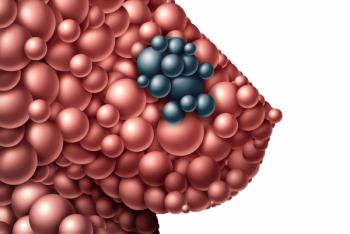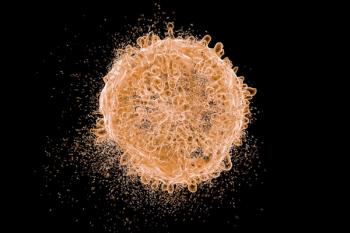
Dostarlimab Benefits Appear More Pronounced in dMMR Endometrial Cancer

The phase 3 RUBY trial evaluated dostarlimab in combination with carboplatin/paclitaxel in patients with primary advanced or recurrent endometrial cancer.
Although a statistically significant progression-free survival (PFS) benefit was seen with dostarlimab-gxly (Jemperli) in combination with chemotherapy for primary advanced endometrial cancer in patients with mismatch repair deficient tumors (dMMR), more can be done to improve outcomes for those with mismatch repair proficient (pMMR) disease, according to Ritu Salani, MD.
CancerNetwork® spoke with Salani, a board-certified gynecologic oncologist and director of Gynecologic Oncology at the University of California, Los Angeles Health, about the
Salani explained that the dMMR population had the most pronounced PFS impact with the potential to cure patients from their disease when treated with the combination therapy. Additionally, Salani suggested that treatment using other biomarkers may produce more meaningful outcomes for patients in the pMMR setting.
Topline data showed that across the overall trial population, treatment with dostarlimab/chemotherapy produced statistically significant improvements in overall survival (OS; HR, 0.69; 95% CI, 0.54-0.89; P = .002) and progression-free survival (PFS; 95% CI, 0.64; 95% CI, 0.51-0.80; P <.0001) compared with the placebo arm.2
Previous findings from an exploratory analysis comparing outcomes across different tumor types found a significant OS benefit in dMMR tumors, with deaths occurring in 22.6% of the dostarlimab group and 53.8% of the placebo group; data for OS reached 40% maturity at the time of the analysis (HR, 0.32; 95% CI, 0.17-0.63; P = .0002). At 55% OS maturity for pMMR tumor types, deaths occurred in 50.5% and 59.2%, respectively (HR, 0.79; 95% CI, 0.60-1.04; P = .0493).
Transcript:
The dMMR population, which are patients who have deficiency in their mismatch repair proteins, really had the most pronounced impact in PFS, and we’re seeing that trend for prolonged periods of time; we may be curing many of these patients. I think the pMMR data from the RUBY trial leaves a little bit more to be desired. Although we see a PFS benefit and a clinical trend towards overall survival, it is not statistically significant. It just reminds us that we need to do better for these patients. There are still some opportunities to capitalize on tumor profiles or other biomarkers that may be more meaningful.
References
- FDA expands endometrial cancer indication for dostarlimab-gxly with chemotherapy. News release. FDA. August 1, 2024. Accessed August 16, 2024. https://tinyurl.com/mtr6tpyp
- Powell MA, Bjørge L, Willmont L, et al. Overall survival in patients with endometrial cancer treated with dostarlimab plus carboplatin–paclitaxel in the randomized ENGOT-EN6/GOG-3031/RUBY trial. Ann Oncol. 2024;35(8):728-738. doi:10.1016/j.annonc.2024.05.546
Newsletter
Stay up to date on recent advances in the multidisciplinary approach to cancer.































































































